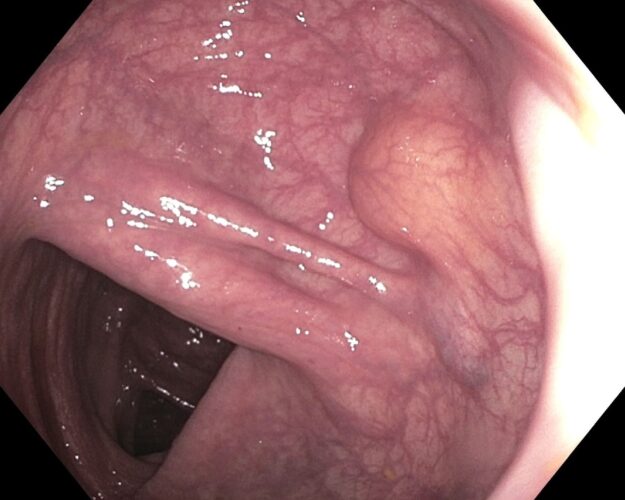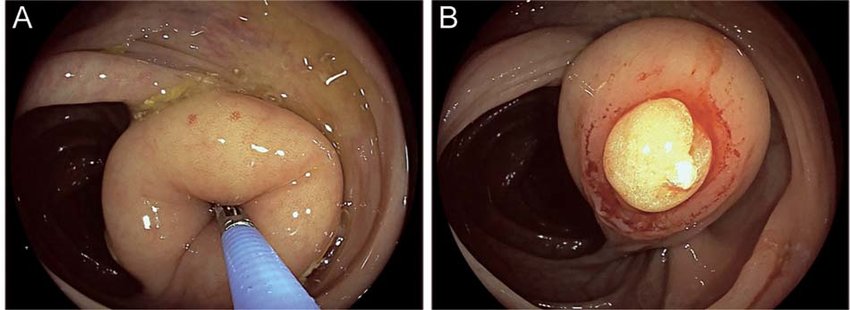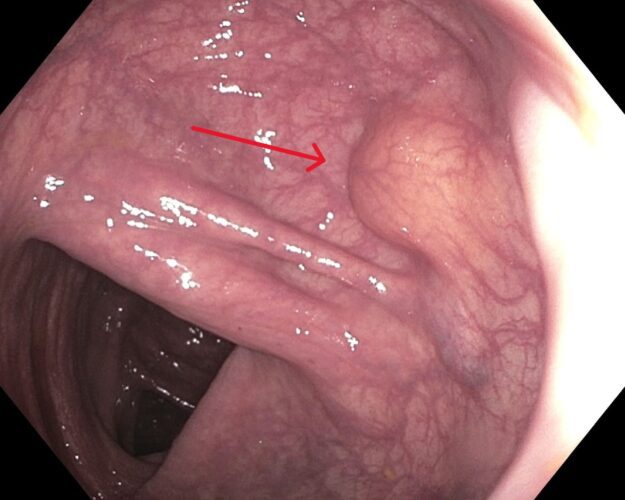Case 23: A 57-Year Old Woman with a History of Tubular Adenomas
This 57-year old woman returns for a surveillance colonoscopy five years after having had 4 tubular adenomas removed, all less than 10 mm in size. Otherwise, her past medical history is unremarkable, and she is not currently taking any medications. During the procedure, the following lesion is identified in her transverse colon. What explains this anatomical finding?


This lesion is a colonic lipoma, which are typically asymptomatic, and rather are found identified incidentally during endoscopy. Lipomas are benign fatty tumors, which can be found throughout the body, including in the GI tract. Nevertheless, there are rare cases where gastrointestinal lipomas greater than 4 cm in size can mainfest with symptoms including abdominal pain, obstruction, or intussuception.
It is important to be able to distinguish benign lipomas from other subepithelial lesions on endoscopy (ex. leiomyomas or gastrointestinal stromal tumors, GIST). Endoscopic features which can aid in the diagnosis of a colonic lipoma include the pillow sign (A) [soft lesion with indentation resembling a pillow when depressed], and the naked fat sign (B) [extrusion of submucosa fat from the lesion following a biopsy]. A biopsy is not always required, but can be useful when the endoscopic findings are ambiguous.



